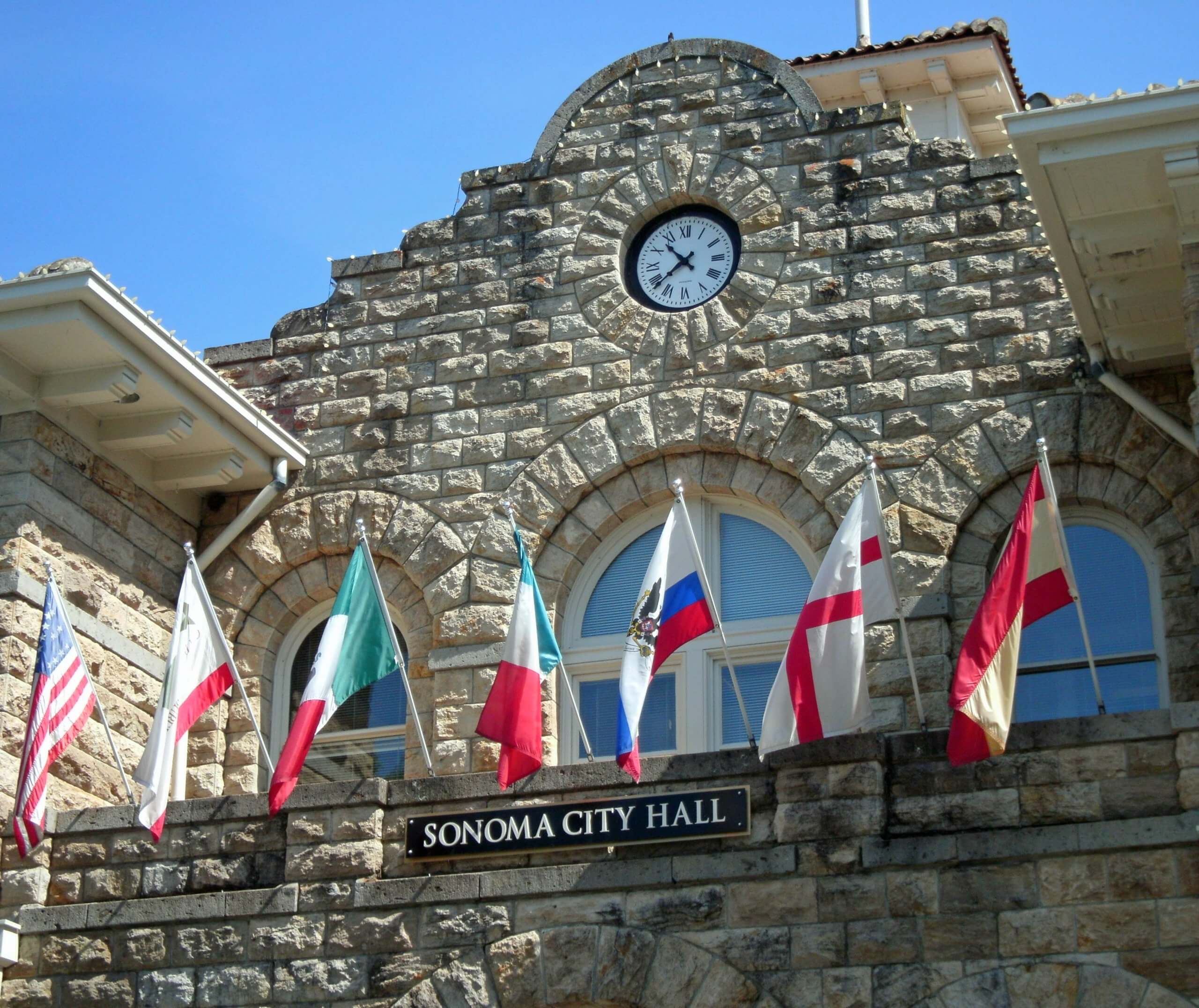Small towns in California are an endangered species. The combination of expensive state and federal mandates and regulations, rising costs of government, internet-based consumer spending, and limited revenue opportunities poses an almost insurmountable obstacle to survival.
It was not always this way. When I became involved in local government thirty-five years ago, charting a course towards a successful future was easier. The methods we relied upon were tried and true solutions that reflected a simpler world and had proven themselves effective in the past. These included fundamentals of boosting income and controlling expenses, making plans reflective of community priorities, and operating in a world that moved slowly enough that plans for the future were not quickly rendered obsolete. All that has changed.
When I was first elected to Sonoma’s City Council in 1994, the city found itself in a terrible mess. After the simultaneous departure of its City Manager of fourteen years and its external auditor, plus the hiring of a new City Manager and new external auditor, it was discovered that the city’s General Fund, after loaning the city’s Redevelopment Agency millions for failed development projects, was out of money. The new auditor spent six months investigating the city’s financial condition, and it was worse than terrible. We were broke. He made $41 million in adjustments to balance the books, discovered the city had violated its bond covenants, and uncovered twenty-one reportable conditions. With no reserves, the city had to open a line of credit with a local bank just to make payroll.
We froze salaries and hiring, stopped funding building maintenance and vehicle replacements, and with the help of a “blue ribbon” committee of local citizens developed a plan to rebuild the city’s finances. We hired a full-time finance director and imposed a set of procedural controls. Within twelve years, we had $8 million in reserves and stabilized our financial condition. Pulling off that sort of thing today is virtually impossible.
The world is nothing like it was in 1994; the pace of change has accelerated beyond the ability to plan. No sooner does a plan get made than it’s out of date. This is a result of both political and technological forces, both of which are tidal in effect, meaning they are beyond the control of any city, let alone a small one like Sonoma.
State mandates, for example, arrive fast and furious; legislation is poorly drafted, subject to political and cultural whims, and comes with a stick, not a carrot. Housing laws alone, fifty-three in 2023 and probably that many again in 2024, arrive constantly. Many are crafted by industry consultants and lobbyists and can only be implemented by hiring expensive consultants. No city, including Sonoma, has employees capable of doing the state’s bidding.
Meanwhile, the cost of government rises 4-5% each year, regularly outstripping revenues. The approval of a half-percent increase in local sales tax will do little more than cover the city’s $2.8 million General Fund deficit for a few years.
Sales tax revenue is not increasing fast enough. Consumers are buying goods on the internet and retailing, as evidenced by the increasing number of vacant store fronts in Sonoma, is tougher than ever. People want Affordable Housing, which requires government subsidies and provides minimal property tax; of that, the city only gets a paltry 14%. Hotel revenue is iffy, dependent upon the economy and visitor preferences.
We face a fundamental, perhaps existential challenge. Any ideas?






Time to Think out-of-the-wine box. E.g.,Attract a new non-wine-based commercial activity/industry that pays higher wages and/or draws visitors. E.g., some sort of pleasant wine-country venue’ marketed to tech & other sectors for trade shows, etc; form a civic group to attract foreign (particularly Asian) tourists. Explore possibility of attracting a branch campus of a major education or research institute, whose activities would stimulate related support businesses/activities. Perhaps establish & market a major wildlife preserve with on-going programs, lectures, research, etc. But NO steel mills.